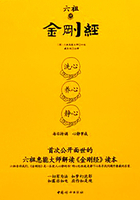In harmony with the general hypothesis that all objects in nature are personal, and human or bestial, in real shape, and in passion and habits, are the myths which account for eclipses. These have so frequently been published and commented on that a long statement would be tedious and superfluous. To the savage mind, and even to the Chinese and the peasants of some European countries, the need of an explanation is satisfied by the myth that an evil beast is devouring the sun or the moon. The people even try by firing off guns, shrieking, and clashing cymbals, to frighten the beast (wolf, pig, dragon, or what not) from his prey.
What the hungry monster in the sky is doing when he is not biting the sun or moon we are not informed. Probably he herds with the big bird whose wings, among the Dacotahs of America and the Zulus of Africa, make thunder; or he may associate with the dragons, serpents, cows and other aerial cattle which supply the rain, and show themselves in the waterspout. Chinese, Greenland, Hindoo, Finnish, Lithunian and Moorish examples of the myth about the moon-devouring beasts are vouched for by Grimm. A Mongolian legend has it that the gods wished to punish the maleficent Arakho for his misdeeds, but Arakho hid so cleverly that their limited omnipotence could not find him. The sun, when asked to turn spy, gave an evasive answer. The moon told the truth. Arakho was punished, and ever since he chases sun and moon. When he nearly catches either of them, there is an eclipse, and the people try to drive him off by making a hideous uproar with musical and other instruments.
Captain Beeckman in 1704 was in Borneo, when the natives declared that the devil "was eating the moon".
Tylor, Primitive Culture, vol. i.; Lefebure, Les Yeux d'Horus, Teutonic Mythology, English trans., ii. 706.
Moon-Lore by Rev. T. Harley, p. 167.
Dr. Brinton in his Myths and Myth-Makers gives examples from Peruvians, Tupis, Creeks, Iroquois and Algonkins. It would be easy, and is perhaps superfluous, to go on multiplying proofs of the belief that sun and moon are, or have been, persons. In the Hervey Isles these two luminaries are thought to have been made out of the body of a child cut in twain by his parents. The blood escaped from the half which is the moon, hence her pallor. This tale is an exception to the general rule, but reminds us of the many myths which represent the things in the world as having been made out of a mutilated man, like the Vedic Purusha. It is hardly necessary, except by way of record, to point out that the Greek myths of sun and moon, like the myths of savages, start from the conception of the solar and lunar bodies as persons with parts and passions, human loves and human sorrows. As in the Mongolian myth of Arakho, the sun "sees all and hears all," and, less honourable than the Mongolian sun, he plays the spy for Hephaestus on the loves of Ares and Aphrodite. He has mistresses and human children, such as Circe and Aeetes.
Gill, Myths and Songs, p. 45.
See chapter on Greek Divine Myths.
The sun is all-seeing and all-penetrating. In a Greek song of to-day a mother sends a message to an absent daughter by the sun; it is but an unconscious repetition of the request of the dying Ajax that the heavenly body will tell his fate to his old father and his sorrowing spouse.
Sophocles, Ajax, 846.
Selene, the moon, like Helios, the sun, was a person, and amorous.
Beloved by Zeus, she gave birth to Pandia, and Pan gained her affection by the simple rustic gift of a fleece. The Australian Dawn, with her present of a red kangaroo skin, was not more lightly won than the chaste Selene. Her affection for Endymion is well known, and her cold white glance shines through the crevices of his mountain grave, hewn in a rocky wall, like the tombs of Phrygia.
She is the sister of the sun in Hesiod, the daughter (by his sister) of Hyperion in the Homeric hymns to Helios.
Virgil, Georgics, iii. 391.
Preller, Griech. Myth., i. 163.
In Greece the aspects of sun and moon take the most ideal human forms, and show themselves in the most gracious myths. But, after all, these retain in their anthropomorphism the marks of the earliest fancy, the fancy of Eskimos and Australians. It seems to be commonly thought that the existence of solar myths is denied by anthropologists. This is a vulgar error. There is an enormous mass of solar myths, but they are not caused by "a disease of language," and--all myths are not solar!















